What Flower Types Are Perfect? A Guide to Blossoming Choices
When exploring the world of flowers, you’ll discover a dazzling array of shapes, colors, and scents. Some flowers stand out as perfect blooms, offering both beauty and functionality. Perfect flowers are those that possess both male and female parts, which allows them to self-pollinate. This can make them fascinating and practical choices for your garden.
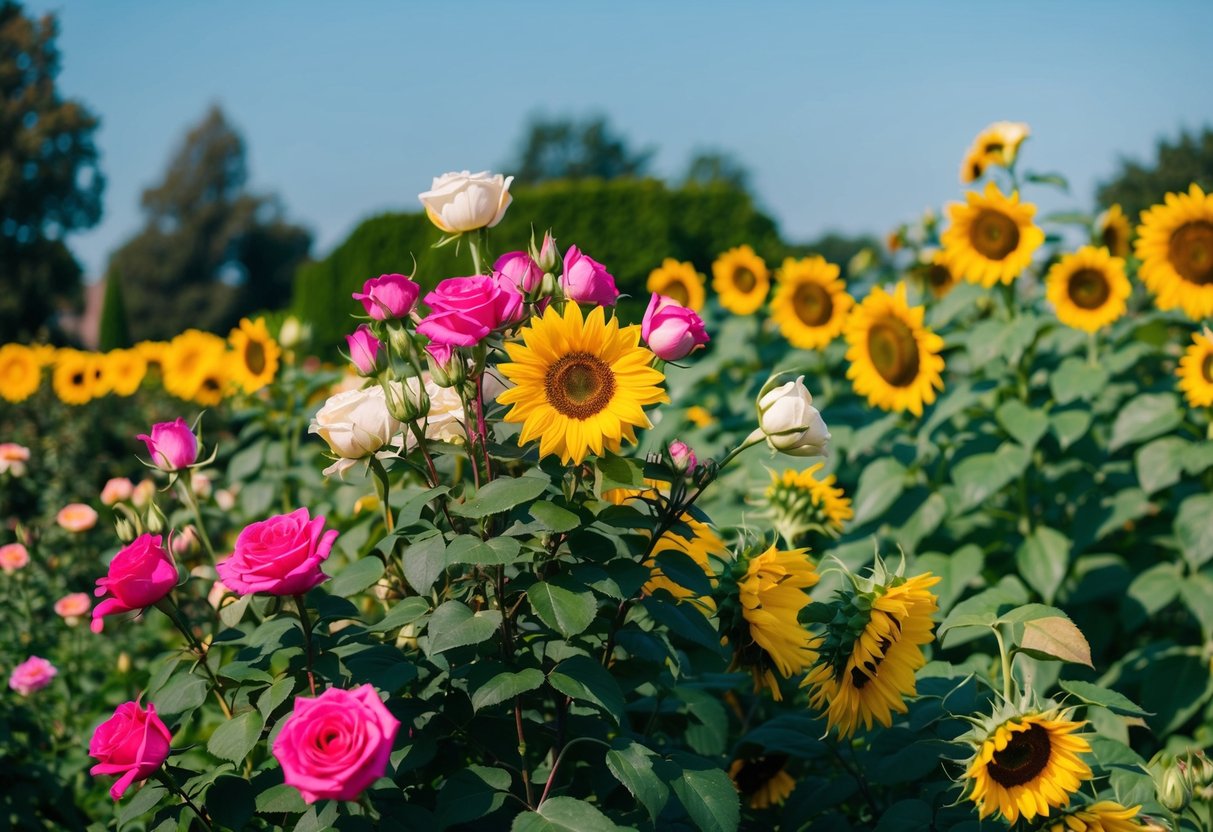
You might be familiar with some well-known perfect flowers, such as roses and lilies. These blossoms are not only stunning but also versatile in their roles within the plant world. Their breathtaking beauty makes them favorites in gardens and bouquets alike, adding fragrance and splendor to any setting.
Choosing the right type of flower for your space can make all the difference in creating a vibrant garden. By selecting flowers with unique fragrances and vibrant colors, like irises or lilacs, you can create a captivating display. Whether you’re drawn to the elegance of a rose or the delicate charm of an iris, each flower type offers something special.
Defining Perfection in Flowers

When you think of perfect flowers, you’re likely considering more than just their appearance. Perfect flowers are appreciated for their stunning beauty, captivating fragrance, and unique color and form.
Beauty and Fragrance
Beauty and fragrance are often the first things you notice in a perfect flower. Roses are renowned for their classic beauty and alluring scent. Orchids offer a unique elegance, making them a favorite in many homes and gardens. Meanwhile, lilies stun with their striking appearance and delightful fragrance.
A dahlia’s complex structure adds depth to any arrangement, and irises bring a refined silhouette. Tulips and sunflowers shine with their simple yet attractive forms. Each of these blooms brings something special to your senses, making them hard to resist.
Color and Form
Color is another critical aspect that defines flower perfection. The vibrant colors of dahlias and irises can capture anyone’s attention. Roses, with their rich colors, have become symbols of love and passion. The bright, sunny heads of sunflowers automatically brighten your surroundings.
Tulips are known for their variety of bold colors and simple, pleasing shapes. An orchid, with its intricate design and vivid hues, proves how form can enhance the beauty of a flower. The interplay between a flower’s color and form creates a visual impact that captivates your eyes and leaves a lasting impression.
Popular Flower Types for Gardens
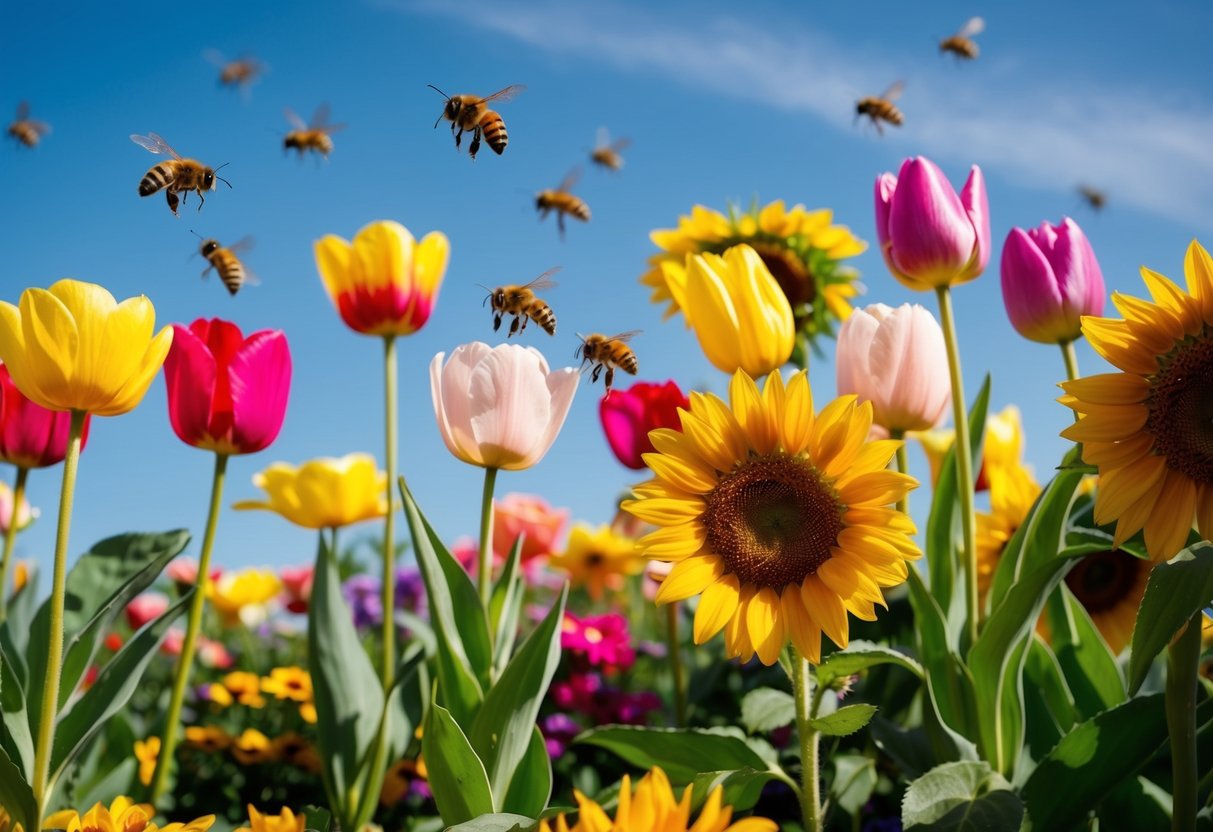
Choosing the right flowers for your garden can add beauty, attract pollinators, and even extend your garden’s bloom time. Here, we’ll explore various options including annuals, perennials, shrubs, and bulbs.
Annuals and Perennials
Annuals like cosmos and zinnias offer vibrant colors that last through the growing season. These flowers need to be replanted each year but provide a long-lasting display once they bloom. They are perfect for creating impact with their bold colors and attracting butterflies and other pollinators.
Perennials such as daylilies and lavender return year after year, saving you the trouble of replanting. They can handle a variety of conditions and climates. These plants typically start to bloom in spring or early summer and can last until fall. Perennials are often chosen for their hardiness, making them great for a low-maintenance garden.
Shrubs and Bulbs
Shrubs are an excellent backbone for any garden. Flowers like lilacs and hydrangeas can add structure and timeless beauty. Lilacs are known for their fragrant, colorful flowers that come in shades of purple and white. Hydrangeas, with their large blooms, are typically in demand for their captivating, seasonal color changes.
Spring-blooming bulbs like crocus and tulips are among the first to bloom. They offer early color and are a welcome sight after winter. Bulbs generally require less maintenance after planting, making them a fantastic, low-effort option for your garden. These flowers can be mixed with shrubs for a garden that’s visually appealing throughout the seasons.
Seasonal Blooms and Hardiness Zones
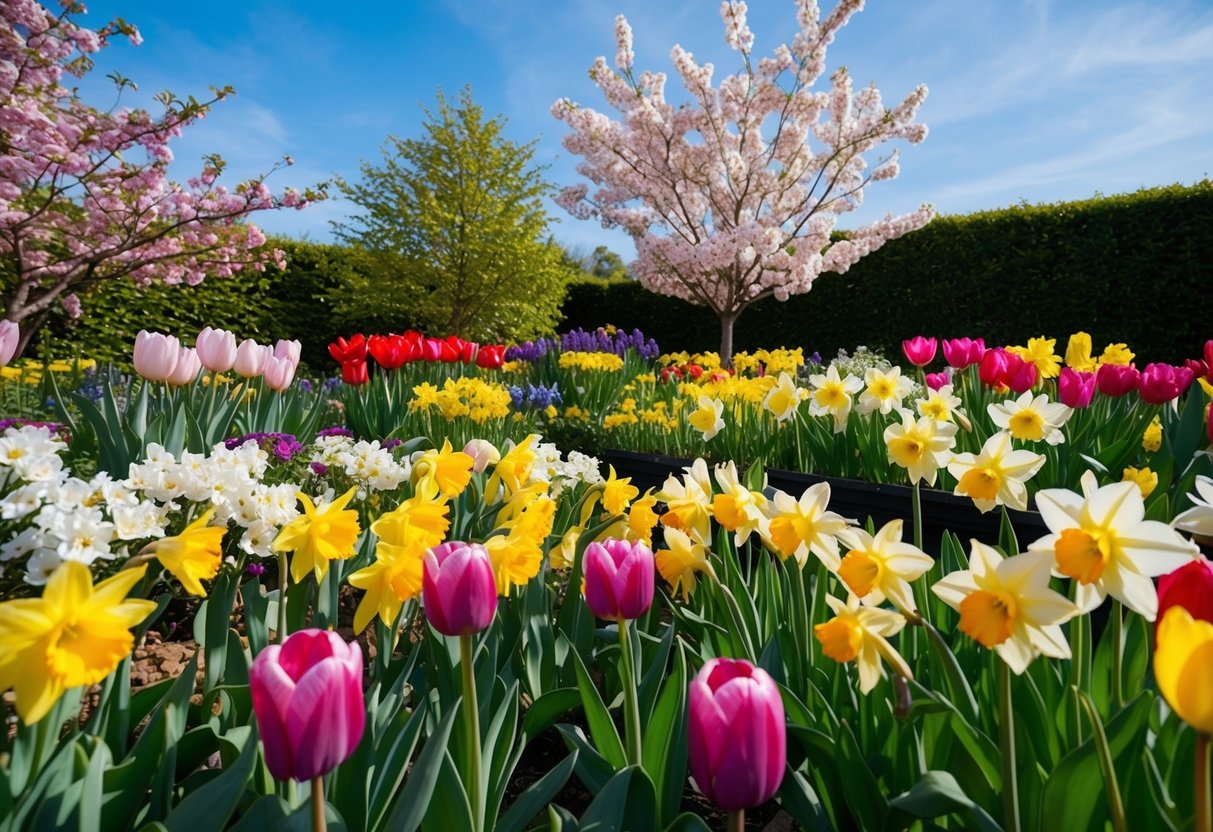
Choosing the right flowers for your garden depends on both the season and the USDA Hardiness Zone you live in. Knowing which flowers thrive in specific seasons ensures that your garden remains vibrant all year round.
Spring and Summer Favorites
Spring is a perfect time to enjoy lilacs and daffodils. These flowers are favored for their bright colors and sweet scents. Lilacs, with their purple blooms, are best suited for cooler climates in zones 3 to 7. Daffodils, known for their yellow petals, can thrive in various zones, from zone 3 to zone 9.
Summer brings bold blooms like sunflowers and roses. Sunflowers can grow in zones 4 to 9, basking in the full sun and adding height to your garden. Roses flourish in zones 5 to 9, offering immense variety in color and size. They need regular care but reward you with stunning, fragrant blossoms.
Autumn and Winter Picks
Autumn is the season for chrysanthemums and asters. Chrysanthemums, also known as mums, are ideal for zones 5 to 9. They bring color late into the year and are wonderful for fall arrangements. Asters, with their star-shaped flowers, can thrive in zones 3 to 8, adding purple and pink hues to your garden as the weather cools.
In winter, snowdrops and azaleas can keep your garden alive. Snowdrops bloom in zones 3 to 7, showing their white flowers even in the coldest months. Azaleas, which remain green all year, do well in zones 6 to 9, providing comfort with their evergreen foliage and colorful spring blossoms.
Attracting Wildlife with Flowers
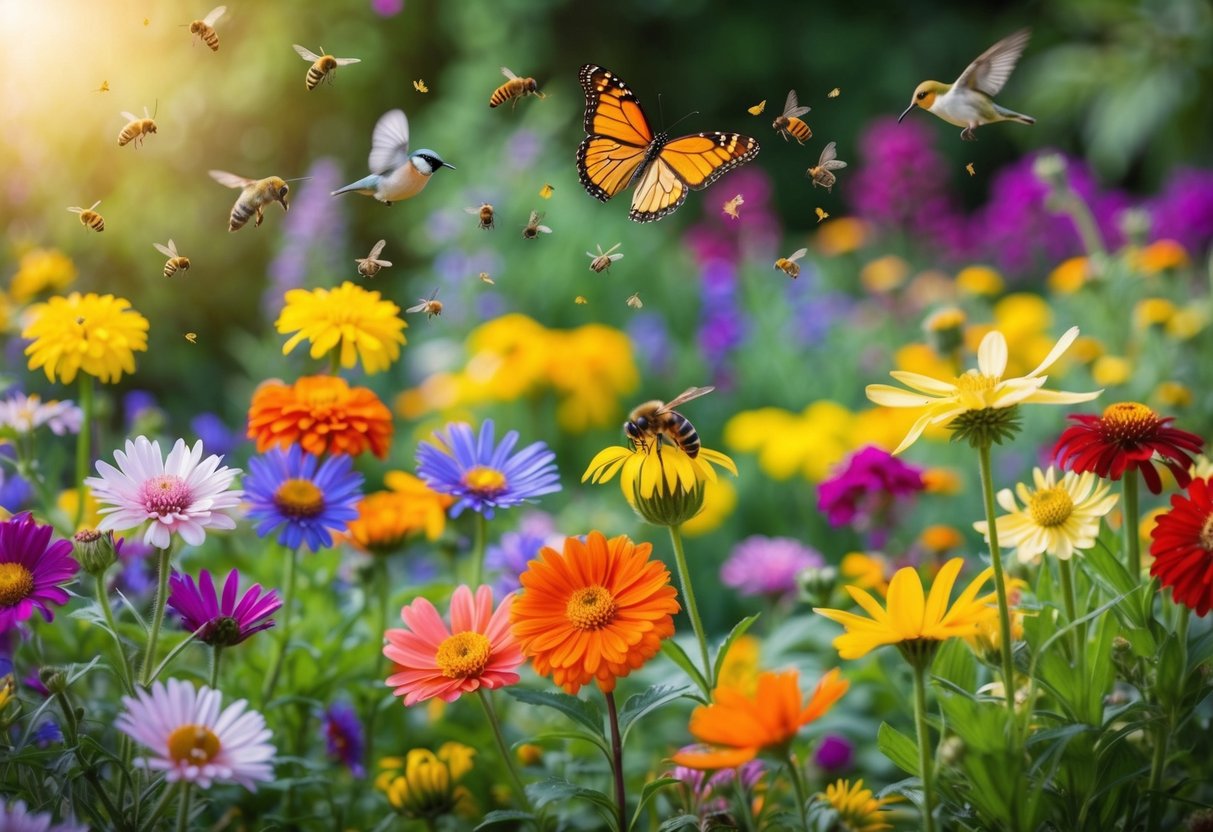
Flowers play a crucial role in drawing various wildlife into your garden. By selecting the right blooms, you can create a vibrant, lively space filled with beneficial insects and stunning birds.
Pollinator-Friendly Choices
When aiming to attract pollinators, it’s important to consider blossoms that offer nectar and pollen. Lavender is a top choice for bees, who love its fragrant blooms and pollen-rich flowers. Another excellent option is bee balm. Its bright colors and tubular flowers invite hummingbirds and bees alike. The allium plant is known for its spherical flowers, which are great for attracting butterflies and bees.
Zinnias and daisies also make fabulous additions. These flowers provide an abundant supply of nectar, making them favorites among bees, butterflies, and other pollinators. Planting a range of these flowers ensures that there’s something blooming throughout the growing season, supporting a thriving community of pollinators in your garden.
Birds and Butterfly Magnets
Attracting birds and butterflies involves selecting colorful and nectar-rich plants. The sunflower is a fantastic choice, as its seeds provide food for birds, while its flowers appeal to butterflies. Butterfly bush is another excellent option, producing clusters of blossoms that fluttering insects can’t resist.
Lantana is ideal for attracting both hummingbirds and butterflies. This plant blooms in multiple colors and adapts well to different climates. Daisies and zinnias also serve as effective magnets for butterflies with their open, flat structures that make accessing nectar easy for these delicate creatures. Including a mix of these plants will create an inviting environment for both birds and butterflies to thrive in your garden.
Unique Flowers for Distinctive Displays
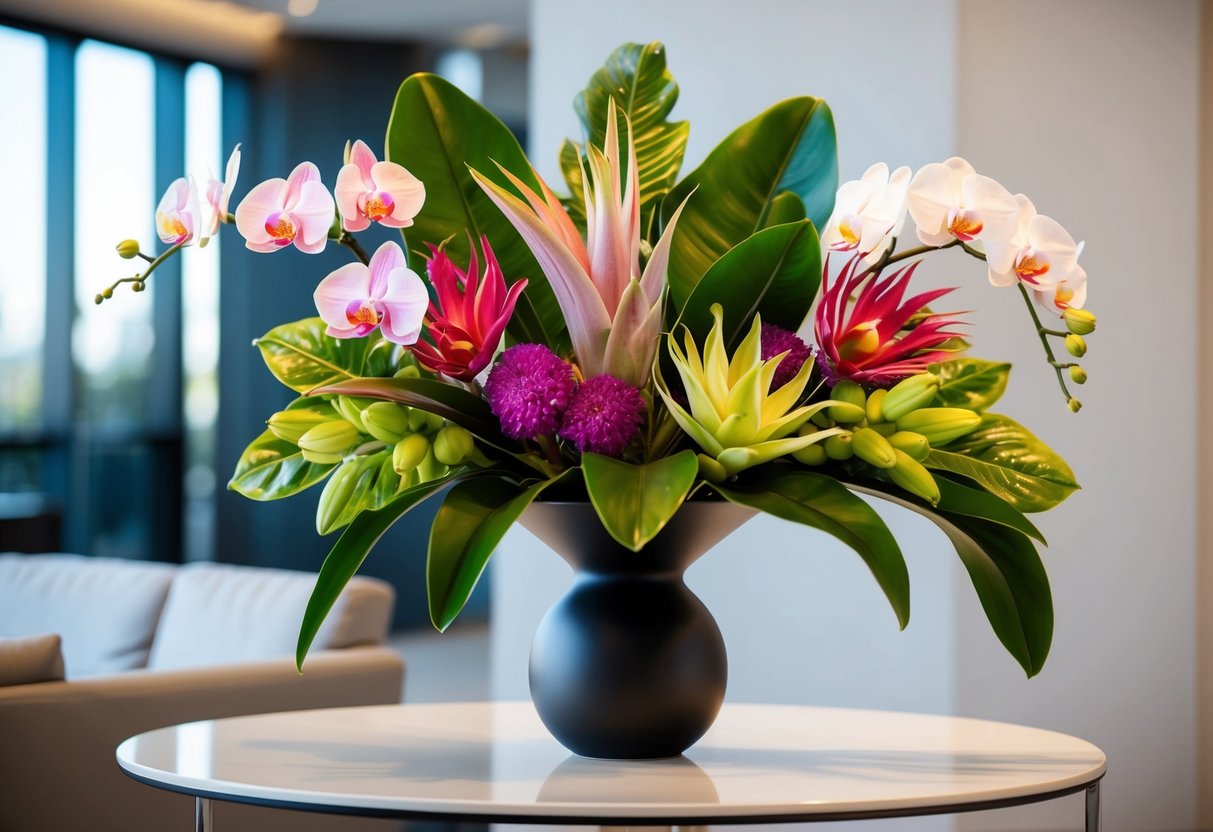
Choosing unique flowers can transform any space, offering stunning visuals and durable displays. Certain bloom varieties bring exotic beauty and sophistication to your arrangements, making them unforgettable.
Exotic and Rare Blooms
For a truly memorable display, consider exotic flowers like the bird of paradise. These striking blooms can add a bold splash of color to any bouquet. Another option is the elegant orchid, known for its delicate and intricate petals. The lotus offers a serene and exotic touch, often symbolizing purity and grace.
Include anemones for a pop of deep color; their velvety petals make them stand out among other cut flowers. Balloon flowers are another captivating choice, with their star-shaped blooms and vibrant hues. Each of these unique flowers provides a distinct visual appeal and can elevate your arrangement.
Creative Arrangement Ideas
When arranging your bouquet, try combining different flower species to create contrast and depth. Use bird of paradise and anemones for a bold, colorful look.
For a centerpiece, mix orchids and lotus to emphasize elegance and tranquility. Placing them in a shallow bowl of water can enhance their beauty. Use balloon flowers to add height and a whimsical touch to your vase.
Consider varying the heights and colors of your flowers for an eye-catching display. Cut flowers can be grouped by size or color to create unique patterns and textures. Adjust your arrangements based on the mood or theme you want to convey, ensuring each flower complements the others.







